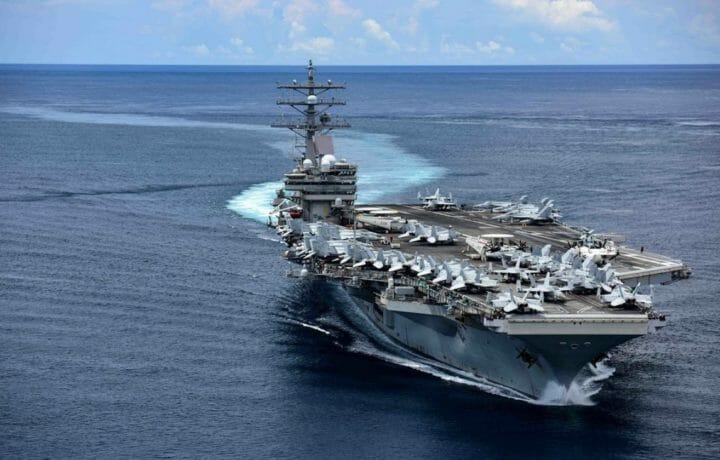The gray zone – or the space between peace and war- is growing rapidly in the South China Seas. In a place where coercion, intimidation, propaganda, and manipulation flourish, the gray zone is being used by the Peoples Liberation Army (PLA) of China to slowly grind down its neighbors in the region. Relentless pressure is being employed by China on its borders with India, Taiwan, Japan, the Philippines, and Vietnam.
Responses Demanded but No Rounds Fired
In March, over 200 Chinese boats were observed at Whitsun Reef, in the hotly contested South China Sea near the Philippines. Manila says China has unlawfully entered its exclusive economic zone and China continues to refuse numerous Philippine appeals for withdrawal.
Recently, Reuters wrote “In this irregular type of conflict, which stops short of an actual shooting war, the aim is to subdue the foe through exhaustion.” Military aircraft, warships, fishing militia, sand-dredging, and even housing estates are all being employed by Beijing. Every incursion requires a response, even if there are no rounds fired. Otherwise, Beijing will enjoy another silent victory.
Irregular Warfare in Action
U.S. military academy analysis warns that our leaders should look closely at the Chinese rhetoric. Some say the PLA is engaging in irregular warfare today, meaning any ‘conventional’ conflict initiation will be murky and not well understood. Sowing doubt and disbelief while taking advantage of loopholes in international law are the significant weapons being employed.
China is capitalizing on lawfare, or the legal use of systems and institutions to achieve their strategic aims. The West Point paper states, “The maritime militia is enforcing China’s sovereignty claims in the East and South China Seas against US partners and allies.”
Further, U.S. navy Analyst Derek Bernsen argues, “Russia and China plan on winning the Great Power Competition by undermining the US, sowing discord, and continuing a secret war until the positions in the world order are reversed.” A West Point think-tank agrees that social media and scheming “influencers” will be used by our foes to turn friends against the US. It is expected that the Chinese forces will ramp up these efforts, promoting negative narratives, turning regional sympathy against the US.
The U.S. Response
Last month, the United States warned China against increasingly aggressive moves toward the Philippines and Taiwan, reminding Beijing of Washington’s obligations to support its partners. State Department spokesman Ned Price told reporters, “An armed attack against the Philippines’ armed forces, public vessels or aircraft in the Pacific, including in the South China Sea, will trigger our obligations under the U.S.-Philippines Mutual Defense Treaty.”
Two weeks ago, Biden emissary Chris Dodd met with the president of Taiwan, Tsai Ing-wen, relaying that the U.S. is “a reliable and trusted friend”, and Washington will help Taiwan expand international space and support investment in self-defense.
President Joe Biden, in his first address to Congress on the 28th of April urged Americans to “win the 21st century” as he described the new great power competition with China and its leader, Xi Jinping. Biden stated that he was not seeking conflict with Beijing and their desire for dominance in the 21st century, “we welcome the competition — and we are not looking for conflict.”
Yesterday, U.S. Secretary of State Antony Blinken stated that an increasingly powerful China is challenging world order, acting “more repressively” and “more aggressively”, while flexing its influence. He further communicated that, “Our purpose is not to contain China, to hold it back, to keep it down; it is to uphold this rules-based order that China is posing a challenge to.”
In Beijing – the administration’s words are mostly ineffectual. China’s Foreign Ministry spokeman stated the U.S. was merely feeling insecure and jealous about China’s development, “We hope the U.S. can discard this ‘sour grapes’ mentality towards China and treat China’s development with a more peaceful and rational mind.”




